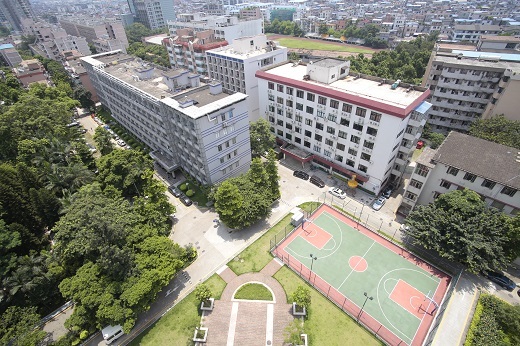中国科学院南海海洋研究所成立于1959年1月,是国立综合性海洋研究机构。
重点研究热带边缘海海洋水圈-地圈-生物圈圈层结构及其相互作用特征与演变规律,探讨其对资源形成和环境变化的控制和影响,发展具有南海特色的热带海洋资源与环境过程理论体系和应用技术。以生态安全与绿色发展、海-陆-气相互作用与环境安全、边缘海与大洋板块相互作用和环境保障为战略主题,聚焦生态文明和海洋建设,着力突破海洋领域前沿科学问题和关键核心技术,力争建成国际水平的热带海洋科学研究、人才培养、成果转移转化三高地,从而为发展中国海洋经济和维护海洋权益做出基础性、战略性和前瞻性贡献。
重点学科领域:热带海洋环境动力与生态过程、边缘海地质演化与油气资源、热带海洋生物资源可持续利用与生态保护和海洋环境观测体系及其关键技术。
设有热带海洋环境国家重点实验室、中国科学院边缘海与大洋地质重点实验室(与广州地化所共建)、中国科学院热带海洋生物资源与生态重点实验室、中国科学院应用海洋学实验室、中国科学院海洋微生物研究中心、中科院岛礁综合性研究中心、中国科学院中国-斯里兰卡联合科教中心(海外基地)以及广东省海洋药物重点实验室、广东省应用海洋生物学重点实验室、广东省海洋遥感重点实验室、海南省热带海洋生物技术重点实验室与海洋环境工程中心等。拥有广东大亚湾海洋生态系统国家野外科学观测研究站、海南三亚海洋生态系统国家野外科学观测研究站,西沙海洋环境观测研究站(2020年12月入选国家野外科学观测研究站择优建设名单)、湛江海洋经济动物实验站、汕头海洋植物实验站和南沙海洋生态环境实验站。有“实验1”“实验2”“实验3”号和“实验6”共四艘大型海洋科学考察船和可长期并靠四艘船、长度为115米的淡水码头。还拥有仪器设备公共服务中心、海洋环境检测中心、南海海洋生物标本馆和海洋信息服务中心。

The South China Sea Institute of Oceanology, CAS, founded in January 1959, is a national comprehensive oceanographic research institute.
We will focus on studying the hydrosphere-geosphere-biosphere structure and its interaction characteristics and evolution law in the tropical marginal sea, explore its control and influence on resource formation and environmental change, and develop the theoretical system and application technology of tropical Marine resources and environmental processes with the characteristics of the South China Sea. With ecological security and green development, sea-land-air interaction and environmental security, marginal sea-ocean plate interaction and environmental protection as the strategic themes, it focuses on ecological civilization and Marine construction, strives to make breakthroughs in frontier scientific issues and key core technologies in the Marine field, and strives to build three high ground of tropical Marine scientific research, personnel training, and achievement transfer and transformation at the international level. This will make a fundamental, strategic and forward-looking contribution to developing China's Marine economy and safeguarding its maritime rights and interests.
Key disciplines: tropical Marine environmental dynamics and ecological processes, marginal sea geological evolution and oil and gas resources, sustainable utilization and ecological protection of tropical Marine living resources, Marine environment observation system and its key technologies.
It has established the State Key Laboratory of Tropical Marine Environment, the Key Laboratory of Marginal Sea and Ocean Geology (jointly established with Guangzhou Institute of Geochemistry), the Key Laboratory of Tropical Marine Biological Resources and Ecology of the Chinese Academy of Sciences, the Laboratory of Applied Oceanography of the Chinese Academy of Sciences, the Research Center for Marine Microbiology of the Chinese Academy of Sciences, the Comprehensive Island and Reef Research Center of the Chinese Academy of Sciences, and China-Sri LAN of the Chinese Academy of Sciences Joint Science and Education Center (Overseas base), Guangdong Provincial Key Laboratory of Marine Medicine, Guangdong Provincial Key Laboratory of Applied Marine Biology, Guangdong Provincial Key Laboratory of Marine Remote Sensing, Hainan Provincial Key Laboratory of Tropical Marine Biotechnology and Marine Environmental Engineering Center, etc. It has the Daya Bay National Field Observation and Research Station for Marine Ecosystems in Guangdong Province and the Sanya National Field Observation and Research Station for Marine Ecosystems in Hainan Province. Xisha Marine Environment Observation and Research Station (selected into the National Field Scientific Observation and Research Station in December 2020), Zhanjiang Marine Economic Animal Experimental Station, Shantou Marine Plant Experimental Station and Nansha Marine Ecological Environment Experimental Station. There are four large Marine scientific research vessels, including "Experiment 1", "Experiment 2", "Experiment 3" and "Experiment 6", and the freshwater dock with a length of 115 meters, which can be used for long-term and supported by four vessels. It also has instruments and equipment public service center, Marine environmental testing center, South China Sea Marine Biology Herbarium and Marine information Service center.